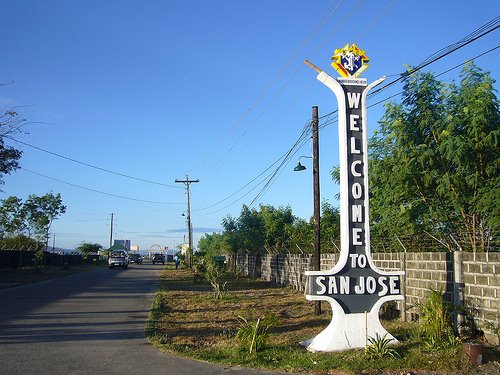A twin is celebrating their 63rd birthday today. Occidental and Oriental Mindoro were a single province before they were legally separated November 15, 2013 by virtue of Republic Act 505 in 1950. In Mamburao, Occidental Mindoro’s capital town, as I write this piece, festive atmosphere invades the air. It ranges from boxing matches to beauty pageant, from trade fare to street dancing, from variety show to parlor games, from the grand opening parade to the culmination night. One thing does not change. Our leaders are still focused on agriculture and tourism as the main decisive factors of the province’s economic progress and development. The theme of the Arawatan 63 states, “Sama-samang tahakin, matuwid na landas ng agri-turismo pag-ibayuhin, Occidental Mindoro paunlarin”. So, taking cue from the event’s theme, extractive industries like oil and gas exploration and exploitation were NOT a priority in our province’s agenda at least for the next twelve months.
According
to researchers, in a Mangyan society, Arawatan spirit is experienced throughout
the year in every activity or endeavor. The Mangyan’s livelihood is basically
agricultural and Arawatan is employed by the people in their activities. Thus,
Arawatan’s spirit is about stewardship of the earth.
Incidentally,
congratulations to LGU-Sablayan for grabbing the Best Booth Award and the Street Dancing Contest for Arawatan 2013. Sablayan's street dance and the winning booth depicts the richness of our town’s natural resources,
bountiful harvests, our coastal and marine richness and other ecological gems that
needs to be protected from dangers posed by destructive development projects,
if I may emphasize, like oil and gas exploration and exploitation. I am
specifically pertaining to the Service Contract 53 Exploration Period in target
municipalities of the whole Mindoro Island covering 724,000 hectares of land
and sea.
My
point is this: Leaders in impact areas such as ours should not swallow right
away, line-hook-and-sinker, what Pitkin Petroleum (Philippines) Ltd or the
consequent laws themselves are offering. For one, massive displacement of the Mangyans
from their livelihood and economic areas is a possibility. How could they
practice their customary and traditional slash-and-burn farming if pipe lines and oil/gas tanks are all over their ancestral land and domains?
I
was informed that just a few months ago, a meeting happened in Manila and
another in Calintaan where representatives from the provincial government and
the oil company plus the Mangyan leaders in the province attended. I do not
know what exactly happened on that two occasions. You may ask the province’s
focal person on Mangyan affairs and concerns on the matter. Nevertheless, its
Project Description needs to be thoroughly scrutinized.
Truth
to tell, environmental and social impacts of onshore hydrocarbon (oil/gas)
exploration and exploitation activities have been extensively documented all
over the globe and which we all need to know. For netizens, it would be helpful if we study via net, for instance, oil and gas cases in the tropical forests of the Amazon.
I
do not wish to discuss here the detailed and specific environmental and social
impacts of oil and gas exploration and exploitation. That I’ll save for the
forthcoming information and education campaign that I will be attending in the
future in both in my private and public capacities as a social advocate or on
my next blog entries for sure.
Meanwhile, a happy anniversary to all and congratulations to the people from Sablayan's tourism office and the Sablayan National Comprehensive Highschool (SABNACOHIS) for a job well done including the event organizers from the PGO.
Meanwhile, a happy anniversary to all and congratulations to the people from Sablayan's tourism office and the Sablayan National Comprehensive Highschool (SABNACOHIS) for a job well done including the event organizers from the PGO.
--------
(Photo: Sablayan Herald)










